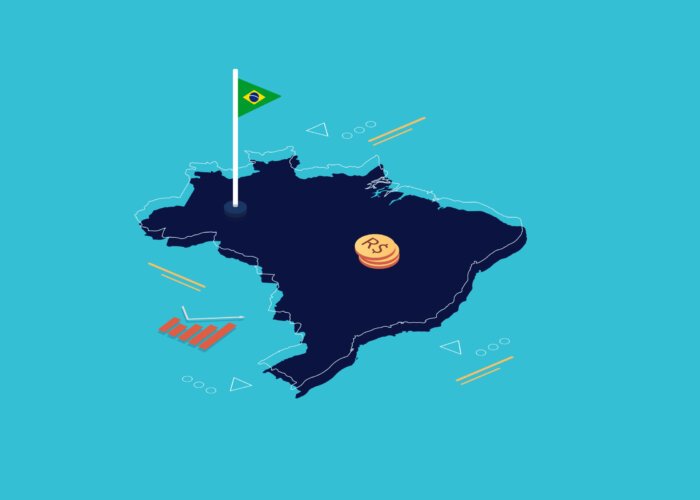The History of Open Finance in Brazil


While financial institutions worldwide continue debating open banking timelines, Brazil has built a fully operational open finance ecosystem in just five years. With over 700 registered participants, 60+ million customers actively sharing data and PIX processing 6+ billion monthly transactions, Brazil has leapfrogged from open banking follower to global open finance leader.
The numbers are staggering and while most markets struggle with basic banking APIs, Brazil integrated insurance, pensions, investments and foreign exchange into one unified framework.
Brazil’s success stems from three strategic decisions: ecosystem thinking from day one (planning for all financial services, not just banking compliance), PIX infrastructure foundation (instant payments that transformed open finance from data-sharing into transaction-enabling) and regulatory clarity with phased precision (a four-phase rollout that built complexity gradually while maintaining momentum).
This approach enabled Brazil to achieve in five years what other markets are still planning for the next decade. Here’s what Brazil has done in the last five years:
Our story begins in 2016, with the Central Bank (BCB) laying the groundwork long before the term “Open Finance” was on everyone’s lips. Their Agenda BC+ initiative was a declaration: Brazil’s financial future would be digital-first. This philosophy created a momentum, a subtle hum of change that signaled the old ways were fading.
The true moment of decision arrived in April 2019. The BCB, under its new Agenda BC+ banner, officially announced the Open Banking project. This wasn’t a timid step, it was a bold statement. Unlike other countries that began with narrow mandates, Brazil immediately signalled broader ambitions, placing the project at the heart of a comprehensive modernisation effort.
But the BCB understood that change couldn’t be imposed from on high. In August 2019, they embarked on a critical journey of listening. Public Consultation No. 73/2019 was a months-long exercise in genuine stakeholder engagement. They didn’t dictate — instead they consulted — gathering crucial input from banks, payment providers and tech companies. This collaborative approach was a key differentiator, it secured industry buy-in and solved potential implementation issues before they became roadblocks.
With the vision clear and the stakeholders aligned, 2020 was about building a foundation sturdy enough for what was to come. On May 4th 2020, the Joint Resolution CMN-BCB No. 1/2020 was published, a blueprint of unprecedented detail. It didn’t just mandate data sharing; it established a governance framework, defined technical standards, and set clear timelines. Crucially, it required all participants to sign a collective Open Finance Convention, knitting the entire industry into a unified, coordinated effort.
Then came the accelerant: the November 2020 PIX launch. This instant payment system was transformational. Within five days of registration opening, 25 million PIX keys were created. This explosion of instant adoption proved two things. Brazilian consumers were hungry for digital financial innovation, and that instant transaction infrastructure now existed to make Open Finance truly useful, not just a regulatory chore.
The actual build-out was a carefully managed climb:
Today, the ecosystem reflects a mature, stable system. The July 2024 BCB Resolution No. 400 replaced all interim rules with definitive, permanent governance structures, built for long-term stability. Innovation didn’t stop there; simultaneous efforts to launch PIX contactless payments (“Pix by approximation”) demonstrate a continuous drive forward.
The metrics speak for themselves: with over 60 million customers with active consent and more than 700 registered participants spanning all financial services, Brazil’s transaction volumes now exceed the total banking activity of most other countries. The once-distant vision of a digital-first system is now the vibrant, functional reality of Brazilian finance.
As we mark five years since Brazil’s open finance journey began, the lessons are clear: success requires ecosystem thinking, infrastructure investment, regulatory clarity, and stakeholder collaboration. Brazil didn’t just implement open banking, it reimagined financial services for the digital age.
While other markets debate incremental approaches, Brazil continues innovating at the frontier. The result is a mature, comprehensive open finance ecosystem that serves as the global benchmark for what’s possible when ambition meets execution.
For financial institutions worldwide, the Brazilian model offers both inspiration and practical guidance. The transformation from traditional banking to comprehensive open finance isn’t just possible, Brazil proves it can be achieved in just five years with the right approach.
Looking to implement open finance standards in your market? Ozone API’s platform supports all global standards, enabling rapid deployment of comprehensive, compliant open banking and open finance capabilities. Our expertise spans implementation across multiple markets and regulatory frameworks worldwide. Get in touch to see how we can help you.
How can banks monetise open banking APIs? Ozone API CEO & Co-Founder explores 3 commercial models to turn APIs into profit.
Cómo Brasil construyó un ecosistema financiero abierto integral en 5 años con más de 700 participantes y más de 60 millones de usuarios, pasando de seguidor a líder mundial.
Consumer-Driven Banking in Canada received a significant push in the new federal budget released on November 4th 2025. Find out what it all means.